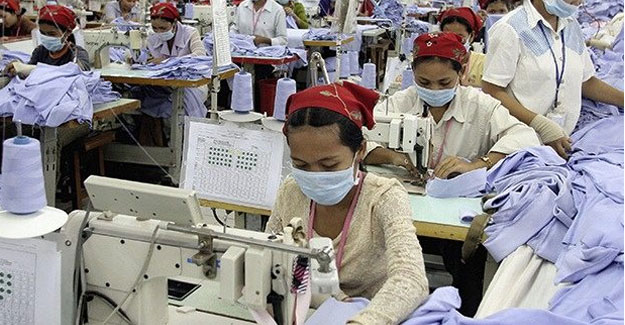
Cambodia, Myanmar Race To Become Next Apparel Manufacturing Hubs
Currently, majority of investments in the apparel industry of Cambodia and Myanmar are by Chinese investors. From October 2021 to March 2022, China lost around 5% of its textile export orders, 7% of its furniture and 2% of its mechanical and electrical export orders from the United States to the 10-member Asscociation of Southeast Asian Nations (ASEAN), especially Vietnam, according to US customs data. “Vietnam has been a very popular destination to take over export orders (from China), but Myanmar and Cambodia are catching up in recent years,” said Wang Huanan, an industry insider with 20 years of experience in shipping and world trade. The relocation has been driven by lower costs and the trade war between China and the United States. However, it’s barely dented China’s manufacturing base as the moves mainly involved low-end processing, experts said. Meanwhile, Chinese companies and investors have been deeply involved in manufacturing relocation, which will in turn support the country’s industrial upgrade at home. According to research by Everbright Securities, the factory relocation to Southeast Asian countries — Vietnam in particular — is largely concentrated in textiles, furniture and low-end consumer electronics assembly. Vietnam has become an obvious alternative to China for the production of clothing and furniture. Authorities in the Cambodian and Myanmar governments have spared no effort in the race to attract foreign investment, introducing tax reductions and exemptions while offering policy incentives. In Cambodia, foreign companies are exempt from import and export taxes for one year and corporate income taxes for three to five years if they meet requirements set by the Cambodian Investment Board. The tax exemption period can be extended to nine years if the company is set up in the country’s special economic zone. The Myanmar government since 2012 has adopted a series of tax exemptions and preferential rights to foreign investment projects. Despite its low base, Cambodia’s export growth has accelerated and outperformed that of Vietnam so far this year. According to the country’s customs authority, Cambodia’s total trade volume reached US$ 22.47 billion in the first five months of 2022, an increase of 19.7% from the same period last year. Total exports topped US$ 9.41 billion, up 34.5% year-on-year. The top export goods were garments, leather goods and footwear. The US is Cambodia’s largest export destination. From January to May, Cambodia shipped US$ 3.73 billion of goods to the US, 57.7% more than a year ago. China is the country’s top source of imports. Shipments from China reached US$ 4.47 billion, up 31.5% from the same period last year. Since 2021, Cambodia has experienced the arrival of another wave of Chinese-funded garment and textile factories due to political turmoil in neighboring Myanmar and the severe pandemic situation in Vietnam. Myanmar is another popular destination for Chinese garment factories shifting production. Shi Kun, president of the Chinese Textile & Garment Association in Myanmar, said that 70% of garment factories in Myanmar are Chinese-funded. Myanmar’s access to preferential tariff treatment from the US, the EU and Japan has attracted Chinese enterprises. The number of garment factories in Myanmar increased from fewer than 100 in 2012 to more than 500 in 2019, according to Shi. Between 2012 and 2019, average annual growth of Myanmar’s garment exports exceeded 18% and topped 50% in some years. The country’s garment exports totaled more than US$ 5 billion between 2018 and 2019, according to Shi. After the pandemic and the political turmoil, Myanmar’s garment trade is resuming, Shi said. “With the political situation stabilizing, Myanmar will see more investment in the garment industry,” Shi said. However, both Cambodia and Myanmar are more of garment assembly factories, importing 95% of their raw materials. A number of factors inhibit investment in upstream processes – non-availability or high cost of resources and inputs, and rising costs of labour.
Textile Excellence
If you wish to Subscribe to Textile Excellence Print Edition, kindly fill in the below form and we shall get back to you with details.








